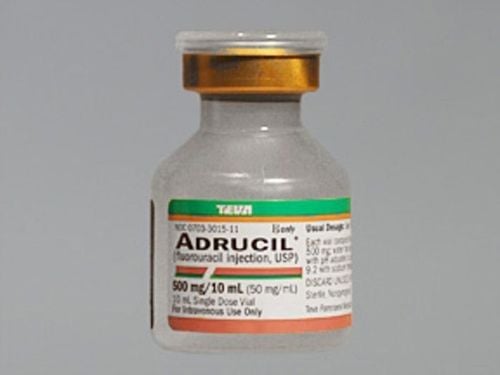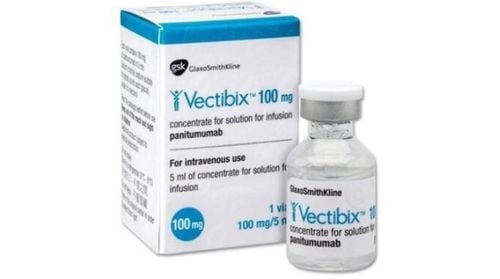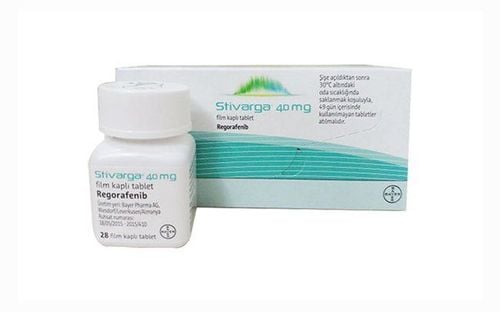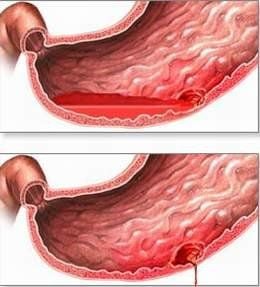This is an automatically translated article.
The article is professionally consulted by Master, Doctor Vu Huy Binh - Department of Medical Examination & Internal Medicine - Vinmec Hai Phong International General Hospital.
Upper gastrointestinal bleeding is a common medical emergency and can be life-threatening.
1. What is upper gastrointestinal bleeding?
Upper gastrointestinal bleeding is defined as bleeding originating in the esophagus, stomach, and duodenum (from the angle of Treitz upwards). Upper gastrointestinal bleeding occurs four times more frequently than lower GI bleeding and is a major cause of morbidity and mortality.The cause of upper gastrointestinal bleeding is gastritis, gastric ulcer, duodenal bulb damage to blood vessels. Bleeding from peptic ulcers accounts for 80% of upper gastrointestinal bleeding. Bleeding from peptic ulcer alone accounts for about 20% of gastric and duodenal ulcers.
Two mechanisms can explain the bleeding:
Bleeding due to gastritis, duodenal often bleeding at a mild level and self-healing Ulcer lesions puncture blood vessels in the stomach and duodenum. 1.1. Gastrointestinal bleeding due to gastric ulcer, duodenal ulcer. Bleeding peptic ulcer - duodenal bulb is a common complication, dangerous for patients and high medical costs. Most bleeding stops spontaneously and does not recur during hospitalization, but there is a group that is at high risk of recurrence and requires endoscopic treatment. If endoscopy fails, then vascular intervention or surgery is needed.
On endoscopy, gastrointestinal bleeding due to peptic ulcer - duodenal ulcer has ulcer in the stomach or duodenal bulb with different bleeding levels: bleeding or oozing, blood clots, exposed blood vessels or dark streaks of blood on the base of the ulcer. Endoscopic intervention is only performed when bleeding is ongoing or has just stopped, or when there is a risk of recurrent bleeding. Treatment of complications in general today includes: early use of intravenous proton pump inhibitors, H. pylori eradication therapy, endoscopy to control bleeding, and changes in indications and surgical methods. previous art.
Gastroduodenal ulcer bleeding is most common in elderly patients (60% at age 60 and 20% at age 80), which is associated with the use of aspirin and clopidogrel or non-steroidal anti-inflammatory drugs. in the elderly in the prevention of cardiovascular diseases and cerebrovascular accidents or arthritis.
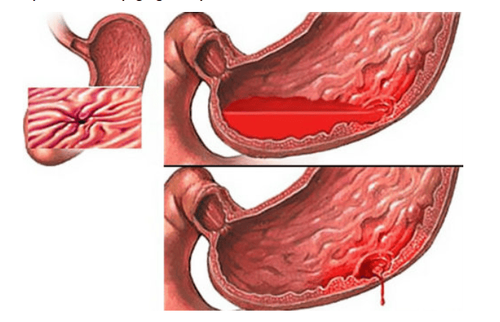
1.2. Upper gastrointestinal bleeding due to portal hypertension The main cause of portal hypertension is cirrhosis due to causes such as viral hepatitis, autoimmune cirrhosis, alcoholic cirrhosis, cirrhosis of the liver. primary biliary... Portal hypertension causes esophageal varices, with or without gastric varices. Rupture of the esophageal or gastric aneurysm often causes severe bleeding, due to liver disease and coagulopathy.
1.3. Other less common causes of upper gastrointestinal bleeding Mallory–Weiss syndrome (usually due to mucosal end esophageal or cardia and longitudinal rupture of the gastric aneurysm, accounting for 15% of upper gastrointestinal bleeding cases) Inflammation erosive peptic ulcer erosive esophagitis Dieulafoy's lesion (caused by an enlarged, tortuous small artery in the submucosa of the stomach, anywhere in the stomach, eroding and bleeding) Vascular metaplasia stomach blood (2-4%) Acute gastritis due to stress - stress (common in patients with severe trauma, patients often hospitalized in the intensive care unit).
2. Forrest classification in upper gastrointestinal bleeding
The Forrest classification is used to grade patients with upper gastrointestinal bleeding in terms of high or low risk of death. This classification is also a valuable method for assessing the risk of rebleeding and is often used in evaluating the effectiveness of endoscopic interventions.2.1. Forrest Grade I bleeding a (Blood spurts) Forrest I b (Blood seepage, seeping out) 2.2. Signs of recent bleeding Forrest II a (visible vessels) Forrest II b (agglutinated clot) Forrest II c (hematin agglomeration on the base of the ulcer) 2.3. Forrest III non-hemorrhagic lesions (lesions without signs of recent bleeding)
3. Treatment of upper gastrointestinal bleeding
3.1 Principles of treatment Restore blood volume and resuscitate Hemostasis Treat cause to avoid recurrence. Light bleedingBed rest, snacks Clinical follow-up and daily tests Diagnosis of cause: gastroduodenal endoscopy, barium gastroscopy, abdominal ultrasound. Moderate to heavy bleeding
Keep head low Do hematology tests Get fluids and blood transfusions Use hemostatics Place a nasogastric tube to monitor bleeding Resuscitate and give shock if available Give oxygen if breathing is difficult 3.2 Treatment according to the cause Medical treatment Endoscopic treatment: Plays a very important role in bleeding due to peptic ulcer. Currently, injection or hemostasis clip is currently the first choice method. Surgical treatment: Mandatory indication in gastrointestinal bleeding with perforation of gastric ulcer, duodenal bulb, gastrointestinal bleeding with pyloric stenosis.
4. Recommendations
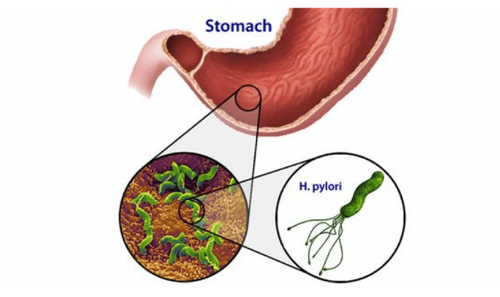
For peptic ulcers caused by H. pylori infection: H. pylori is a bacteria that is often transmitted through food, so we need to have hygienic eating habits to reduce it. H. pylori infection rate. When infected with H. pylori, we need to adhere to the treatment regimen to increase the success rate and reduce the rate of drug resistance. For patients who must use aspirin or anti-inflammatory drugs to relieve pain, it is necessary to use additional drugs to protect the stomach lining to avoid peptic ulcers.
5. Why should gastrointestinal bleeding be treated by endoscopic techniques at Vinmec International General Hospital?
Vinmec International General Hospital has been and is a reliable choice for patients who treat upper gastrointestinal bleeding by endoscopic hemostasis clip, Vinmec is equipped with modern machinery system such as Avance CS2 anesthesia machine, GE's R860 ventilator, endoscope.
Vinmec International General Hospital system applies endoscopic hemostasis with clip in gastrointestinal bleeding, performed by a team of experienced doctors.
Please dial HOTLINE for more information or register for an appointment HERE. Download MyVinmec app to make appointments faster and to manage your bookings easily.







